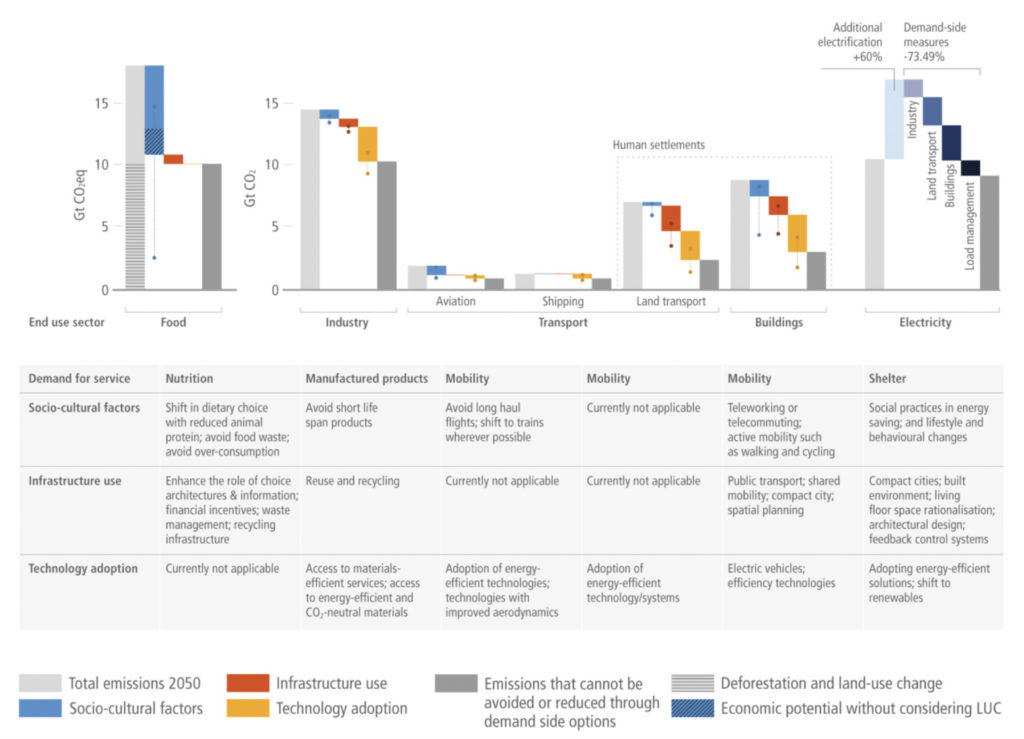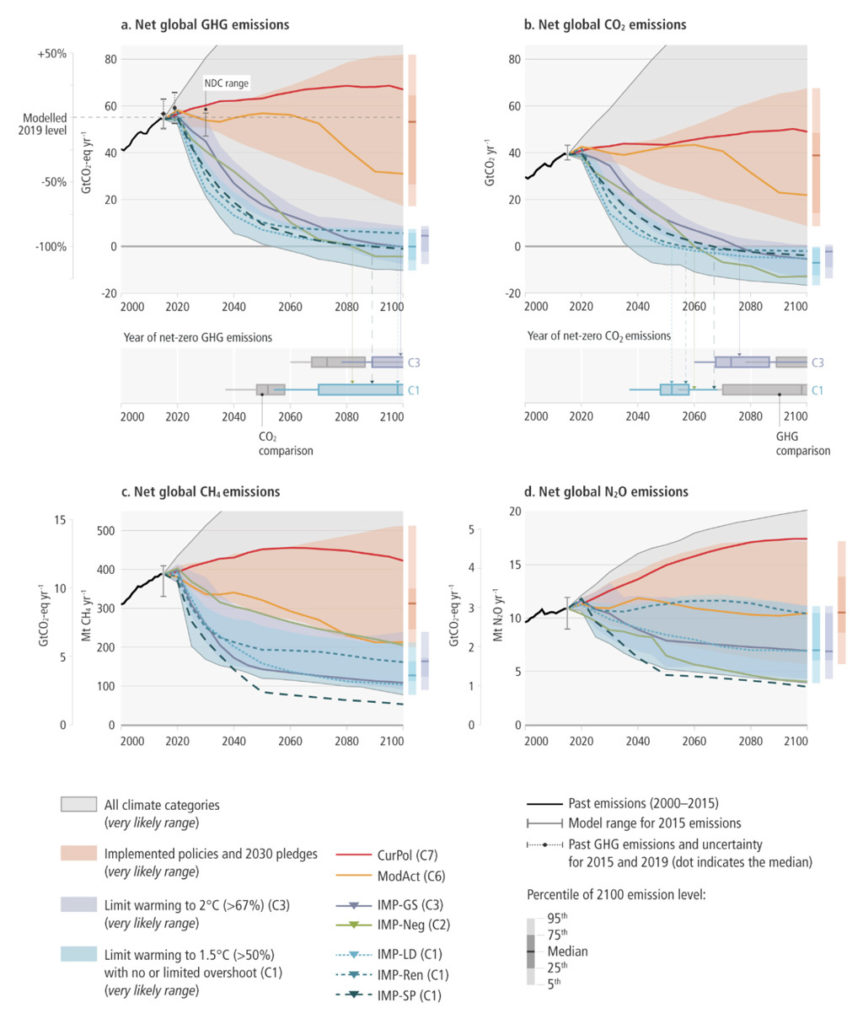I know I’m a bit late on getting to talking about WG3’s report, but I hope the wait has been worth it, because this is a chunky one.
Stories covered in this newsletter:
- IPCC WG3’s Report
- Seriously that’s it.
IPCC WG3 - A new chapter?
A new chapter in Climate legislation? Yes, it’s chapter 5.
“Demand that renewable energy is introduced now at speed and at scale. Demand an end to coal-fired power. Demand an end to all fossil fuel subsidies.” - António Guterres
The United Nations Intergovernmental Panel on Climate Change’s Working Group 3 has released its Sixth Assessment report: Mitigation. This report bears both good and bad news. I was worrying quite a lot about putting this in here, but I’m just going to say it up front: 1.5 is looking less and less alive. I’ll explore this in more detail later, but unless we peak emissions in 2025 at the latest, we will overshoot 1.5C. Despite this bad news, the report also confirms that it is really is never too late to mitigate.
Each assessment cycle the IPCC produces 4 main reports: WG1, WG2, WG3 and SYR which summarises the findings of AR6. This cycle we have also seen special reports such as SR15 which brought to light to the whole world the scale of the incentive to keeping warming to 1.5C. The only unreleased report in AR6 is the Summary. WG3’s report can be broken down into 5 sections: Introduction and frameworks, emissions trends, scenarios and pathways, sectors, institutional dimensions, and conclusions.
“We are not talking about business as usual if we are going to address the challenge of climate change.” - Professor Jim Skea, Co-Chair of WG3
Since 2010, we have seen 85% reductions in costs of solar energy and batteries as well as a 55% reduction in cost of wind power. Some sources of renewable energy are now cheaper than fossil fuels. The report devotes a lot of time to setting out how in each sector emissions can be cut by 50% by 2030. In this way, it is one of the most specific reports to date, setting out economically sound feasible plans for industry as well as for the first time mentioning coal by name in the Summary for Policy Makers. While we should be proud of such steps forward, we can see that even the IPCC report struggles to get past vested interests.
In the energy sector the report highlights the need for electrification and reduction of fossil fuels. It also points out that use of biofuel (whose carbon impact is relatively uncertain) and Carbon Capture and Storage (CSS) are essential tools in the near future. With more small renewable power plants being built, self-sufficient microgrids come into their own which would provide essential grid flexibility and storage. In the transport sector, electric cars have the most potential to reduce emissions, but that relies on decarbonisation of the power sector to ensure that the electricity being used is renewable.
Cities require better urban planning with an emphasis on improving carbon uptake and storage (such as from trees, lakes or green roofs). These changes would also make cities safer, by reducing flood risks and improving air quality. Even though cities have a number of environmental concerns, areas with higher population density are associated with lower per capita emissions, which shows the promise in cities and also that they are essential. Buildings themselves need to be retrofitted and new infrastructure should be built with zero-carbon or low-carbon materials.
Carbon Dioxide Reductions (CDR) will be necessary to remove hard-to-eliminate emissions. A notable (and often underappreciated) method of CDR is reforestation which is a tried and tested method of CDR with myriad other benefits including restoring habitats and biodiversity, strengthening soil, and reducing the impact of natural disasters. Other methods of CDR require more testing to be used on a large scale. Agriculture, Forestry and Other Land Use (AFOLU) has a lot of potential to reduce emissions, but it alone cannot make up for other sectors. It is essential to preserve and restore natural ecosystems and lands such and peatlands, which store carbon, must be protected (in fact, the College owns some peatland around Winchester).
“High-emitting governments and corporations are not just turning a blind eye; they are adding fuel to the flames.” - António Guterres
Our emissions in the past decade are about the same as the budget for keeping warming to 1.5C, says the report with medium confidence. This is alarming because emissions are still increasing each year (although the growth rate has - fortunately - fallen from 2.1% in 2000-9 to 1.3% in 2010-9). This continued rise which is also shown in all major groups of GHGs shows that the leaps forward in renewables “have been largely wiped out by increases in demand for goods and services”.
That fact is that the developed world has “not managed to reduce GHG emissions substantially”. However, there the most developed areas are the places with the most potential for reduction, with the wealthiest 10% responsible for 34-45% of consumption based household emissions across all continents. The report points to a tax on absolute wealth that would not compromise wellbeing to address this in Chapter 5.
Chapter 5
Chapter 5 of WG3’s report, for the first time, addresses demand-side methods for tackling Climate Change. Scientists who worked on this section unpicked how changing our consumption patterns could help us deal with the Climate crisis and how governments could work to encourage these behavioural changes.
The figure below shows the potential that behavioural changes have to help cut emissions. The coloured bars show the effects consumption changes could have on the emissions from each sector with the light and dark grey bars showing the overall emissions with and without these changes.

The biggest reduction could come from food with a shift to avoid animal protein, a reduction in food waste, and reduced over consumption. All the above shifts could cut emissions by a huge 40-70%. However, this is likely infeasible and won’t work alone since current enthusiasm for these kinds of socio-cultural changes is low.
This chapter does look at how we could encourage these behavioural changes and what other benefits they could have. Changes in how choices are presented have the capacity to encourage more environmentally friendly behaviour, for example, Climate activists have been demanding for years that clearer labelling be put on packaging to show environmental impact. Change like this would be make it much easier for otherwise hard-to-decarbonise sectors to reduce emissions by 43% by 2030.
This section concludes that there is only medium evidence that consumption changes will have a significant impact on emissions and that individual behavioural changes won’t be enough unless embedded in structural and cultural change. This is a fact that we have long known: change is probably going to have to come top down, but at least we can push on the top and enact our own changes which can have a substantial impact on an individual’s emissions. Think ASI: Avoid, Shift, Improve. For example: Avoid unnecessary travel, if you can’t avoid it, Shift to public transport, and if you can’t shift it, Improve your car by buying an electric one.
Scenarios and Illustrative Pathways
WG3 created a public database to which scientists could submit emissions scenarios. The nature of this means that the number of scenarios doesn’t mean anything, and the fact that a scenario doesn’t exist along a certain path also doesn’t mean that it is impossible (although in some cases it may - you would have to go back to the original studies to find out).

The report splits the scenarios into 7 Illustrative Pathways (IPs) most of which can be seen on the charts above. They show that it is definitely possible to limit warming to 1.5C, but to do so emissions must peak before 2025 and be reduced by 43% before 2030. If you allow an overshoot before temperature comes down later in the century, emissions can peak in 2030. These dates are now looming very close. Scenarios modelling Current Policy place us at between 2.2 and 3.5C of warming in 2100, which is simply not low enough. Without any further stronger policy, we cannot even rule out 4C. However, there are IPs which keep warming within 1.5 or 2C. Including IMP-LD which focuses on a low demand scenario (lots of behavioural change slows the need for transition in all sectors), IMP-Ren which models a rapid reduction in fossil fuels and IMP-Neg which focuses on CDR and a gradual decarbonisation elsewhere.
Governments must work to reduce the emissions gap of 19-26 GtCO2e/yr to keep 1.5 remotely likely (or 10-16 GtCO2e/yr for 2C, which will also be a challenge with our current NDCs).
Read
IPCC: WG3 AR6 hub, Technical Summary
Carbon Brief: In depth Q&A
Long read
This article goes in deep on the WG3’s findings. It’s laid out in a convenient Q&A format which makes it easy to skip around but it is quite technical and so I wouldn’t recommend it for anyone who doesn’t have any experience reading science about the Climate Change. I didn’t have time to finish reading it before this edition went out, but I first read about plenty of the findings here.
Watch
IPCC: WG3 Press Conference
Medium-long watch
Each time the IPCC releases a report they hold a press conference which is live streamed to YouTube. WG3 edition: featuring different technical difficulties to last time! Definitely worth watching at least to stick around for Secretary General of the UN António Guterres’s initial speech but ideally also for the brief summary of the report’s findings led by key members of WG3.
Listen
Outrage + Optimism: It’s Not Too Late to Mitigate
O+O can also be found on your podcast app of choice. A full transcript is available on their website.
In this fascinating interview with Ko Barrett, she makes a point I hadn’t really considered about the IPCC reports. She (and perhaps the other scientists working on the report) feel a responsibility to youth to maintain hope and avoid doomerism even when bringing mainly bad news in their report. Aside from this she sticks to her core message: change needs to come in the form of real policy and it needs to happen now. Definitely worth a listen. It’s O+O, what more is there to say.
Drilled: IPCC Report, Part One
Drilled can also be found on your podcast app of choice.
This episode of Drilled centres around a conversation between the presenter and one of the scientists who worked on Chapter 5. It really gets into why this chapter is so important, despite its slightly meh conclusions. There is also discussion as to possible flaws with the Summary for Policy Makers. This doesn’t quite feel like a usual episode of Drilled but that doesn’t mean it’s not good.
“What we do over the next 3 to 4 years is going to determine the future of humanity.” - Sir David King
Thanks for sticking with me through that. I’ve got some lighter and some more local topics in the works so stay tuned for that! Speaking of which if you have any suggestions or feedback about things I could cover, ideas for the website or anything else related really, please do pop me an email!
See you next edition!
Oscar Mitcham